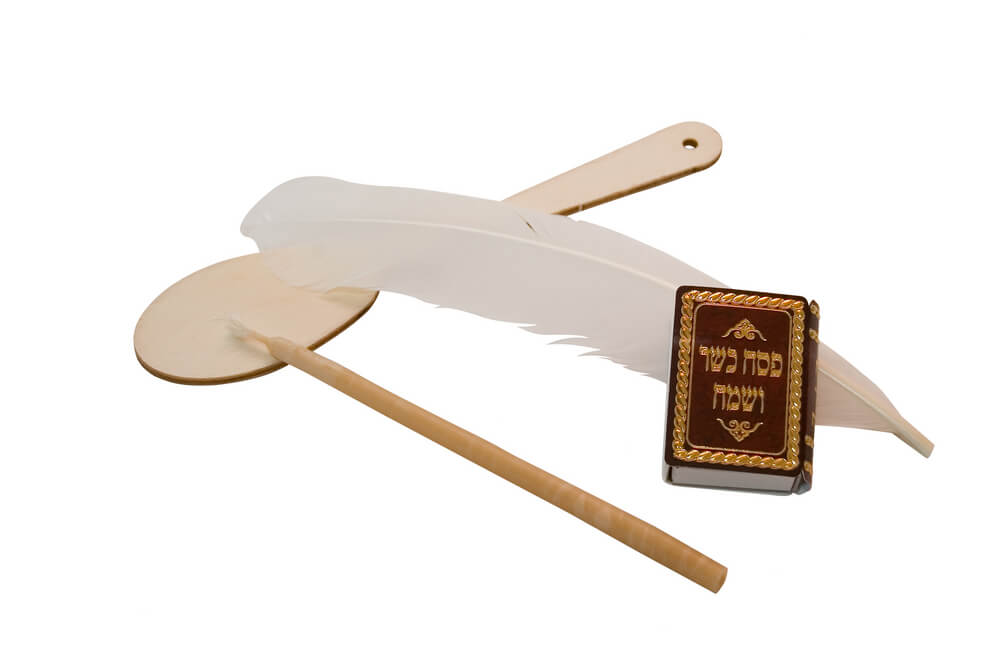
Chametz Removal Kit
Chametz is a Hebrew word meaning “leavening.” It includes any food that has a combination of grain and water that was left to stand and rise for 18 minutes or more. On the Jewish holiday of Passover, owning or eating any chametz is strictly forbidden.
There are five grains to which the prohibition of chametz applies: wheat, rye, barley, spelt, and oats. It is only when one of these five grains is mixed with water and left to stand that it becomes chametz. Things like yeast, baking soda, baking powder, or anything else that aids in fermentation is not strictly prohibited on Passover. In fact, yeast and fermentation are essential to the making of wine, which Jews are even required to drink on Passover. However, Jews are very careful not to mix leavening agents with any grain product and, in general, avoid the use of yeast altogether.
Instead of eating bread, crackers, or other types of chametz, on Passover Jewish people eat a special type of unleavened cracker called matzoh. The matzohs are made specially, either in a factory or by hand, so that they are guaranteed to take 18 minutes or less to cook. In this way, Jewish people can be certain they are not eating chametz on Passover.
Often, to avoid the use of chametz, people will make cakes, bagels, and pancakes with grain flour alternatives. The most popular ones are matzoh meal and potato starch, although some people (depending on their custom) might use others, like rice flour. One can even mix these with baking soda or baking powder because, unlike yeast, they are not actually leavening agents. Instead of causing biological fermentation, they cause a chemical reaction. However, using yeast to make these types of foods is strictly forbidden.
There are some Jewish people who are very strict about avoiding chametz. When matzoh or matzoh meal is combined with another type of food that has moisture in it, it is called “gebrakts.” Some groups of people will not even eat anything with or on their matzoh during Passover, as they are afraid that there may be some small amount of flour that could come into contact with the moisture in other foods and would then rise and create chametz. Thus, they avoid eating anything that could be considered gebrakts.
To further guarantee that no chametz product is owned or used during Passover, Jewish people do a thorough cleaning before the holiday begins. They will eat, throw away, or burn any remaining chametz. The night before Passover begins, there is a ritual to search through the house by candlelight (or using a flashlight), seeking to find any remaining crumbs of chametz. Just in case nothing would be found (due to the previous days’ cleaning), most people will hide a few small pieces of bread to find. These are then taken out and burned the next day.